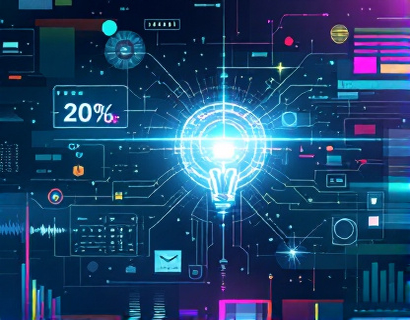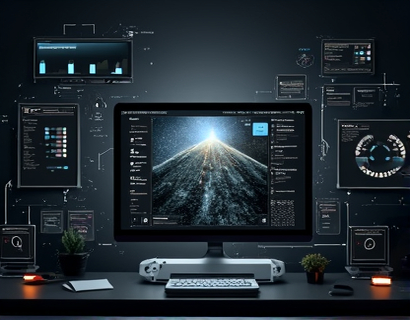Empowering Lifelong Growth: Accessible Educational Resources and Interactive Learning Tools
In today's rapidly evolving world, the pursuit of knowledge knows no bounds. The concept of lifelong learning has gained significant traction, emphasizing the importance of continuous education and personal development. For students and lifelong learners, accessing a wide range of educational resources is crucial to stay informed, adapt to new challenges, and foster a deeper understanding of various subjects. This article delves into the significance of accessible educational resources and interactive learning tools, highlighting how these tools can empower individuals to enhance their educational journey and achieve their full potential.
The foundation of a robust educational experience lies in the availability of diverse and accessible learning materials. Traditional educational settings often rely on physical textbooks and limited resources, which can be restrictive for many learners. The digital age has transformed this landscape, offering a wealth of online resources that cater to different learning styles and needs. Accessible educational resources are designed to be usable by everyone, including those with disabilities, ensuring that no one is left behind in the quest for knowledge.
One of the most significant advantages of digital learning platforms is their ability to provide a comprehensive collection of materials. These platforms offer articles, e-books, interactive courses, and multimedia content that cover a vast array of subjects. The convenience of accessing these resources from anywhere at any time makes them invaluable for learners with busy schedules or those who prefer self-paced learning. Moreover, the digital format allows for easy updates and expansions, ensuring that the content remains current and relevant.
Accessible educational resources are not just about providing content; they are about creating an inclusive learning environment. For students with visual impairments, hearing disabilities, or other special needs, traditional educational materials can pose significant barriers. Digital resources, however, can be tailored to meet these needs through features such as text-to-speech, adjustable font sizes, and alternative text for images. This inclusivity ensures that all learners have equal opportunities to engage with the material and benefit from the educational experience.
Interactive learning tools play a pivotal role in enhancing the educational journey. Unlike passive consumption of information, interactive tools engage learners actively, promoting deeper understanding and retention. These tools can range from online quizzes and interactive simulations to virtual labs and gamified learning experiences. By incorporating interactive elements, learners can explore concepts in a hands-on manner, apply theoretical knowledge to practical scenarios, and receive immediate feedback on their performance.
For students, interactive learning tools can transform the way they approach studies. For instance, virtual labs allow students to conduct experiments and investigations that might be impossible or impractical in a traditional classroom setting. These simulations provide a safe and controlled environment to explore complex phenomena, fostering a deeper understanding of scientific principles. Similarly, gamified learning platforms make education more enjoyable and engaging, motivating learners to participate actively and persist in their learning goals.
Lifelong learners, whether they are professionals seeking to upskill or individuals pursuing personal interests, also benefit greatly from interactive learning tools. Online courses and webinars offer structured learning paths that can be completed at the learner's own pace. These courses often include interactive components such as discussion forums, live Q&A sessions, and collaborative projects, which enhance the learning experience by fostering a sense of community and peer support. This social aspect of learning is crucial, as it provides opportunities for learners to share insights, challenge each other, and gain different perspectives.
The role of technology in facilitating accessible educational resources and interactive learning tools cannot be overstated. Advanced technologies such as artificial intelligence, machine learning, and big data analytics are being leveraged to personalize the learning experience. Adaptive learning platforms use algorithms to analyze a learner's performance and preferences, tailoring the content and pace to meet individual needs. This personalized approach ensures that learners receive the support they need to overcome challenges and achieve their learning objectives.
Furthermore, the integration of multimedia elements such as videos, audio recordings, and infographics caters to diverse learning styles. Visual learners can benefit from video tutorials and graphic explanations, while auditory learners can engage with podcasts and audio lectures. This multimodal approach not only enhances comprehension but also keeps learners engaged and motivated. The variety of formats ensures that there is something for everyone, making the learning process more inclusive and effective.
Another critical aspect of accessible educational resources is their accessibility across different devices and platforms. With the proliferation of smartphones, tablets, and laptops, learners expect to access educational content anytime and anywhere. Responsive design and mobile-friendly interfaces ensure that learning materials are accessible on various devices, providing flexibility and convenience. This mobility is particularly beneficial for learners who may not have consistent access to computers or prefer to learn on the go.
In addition to individual benefits, accessible educational resources and interactive learning tools contribute to broader societal goals. By democratizing access to education, these resources help bridge the gap between different socioeconomic groups. Individuals from underprivileged backgrounds or remote areas can access high-quality educational content that might otherwise be out of reach. This leveling of the playing field promotes social equity and empowers individuals to improve their lives and contribute to their communities.
The impact of accessible educational resources extends beyond personal growth and skill development. In the professional realm, continuous learning is essential for career advancement and staying competitive in a rapidly changing job market. Employers increasingly value employees who are proactive in their learning and development. Access to a wide range of educational resources enables professionals to stay updated with the latest trends, technologies, and best practices in their field, thereby enhancing their value to their organizations.
For educators and instructors, accessible educational resources and interactive learning tools offer new opportunities to enhance their teaching methods. These tools can be integrated into traditional classroom settings to create a blended learning environment that combines the best of both worlds. Educators can use digital platforms to supplement their lessons, provide additional resources, and facilitate more interactive and engaging classroom activities. This approach not only enriches the learning experience for students but also supports educators in their role as facilitators of knowledge.
Moreover, the data generated from interactive learning tools can provide valuable insights into learner behavior and performance. Educators can track progress, identify areas of difficulty, and adjust their teaching strategies accordingly. This data-driven approach allows for more targeted and effective instruction, ultimately leading to better learning outcomes. For lifelong learners, self-assessment tools and progress tracking features help them stay motivated and focused on their learning goals.
In conclusion, accessible educational resources and interactive learning tools are transformative components of the modern educational landscape. They empower students and lifelong learners by providing a rich and inclusive learning environment, fostering personal growth, and supporting continuous development. As technology continues to advance, the potential for innovation in education is vast, promising a future where learning knows no bounds and everyone has the opportunity to grow and thrive.










































